This was published 9 months ago
‘National living treasure’ dedicated to improving the lives of Aboriginal and Torres Strait Islander people
Warning to Aboriginal and Torres Strait Islander readers: This story contains images and references to a deceased person.
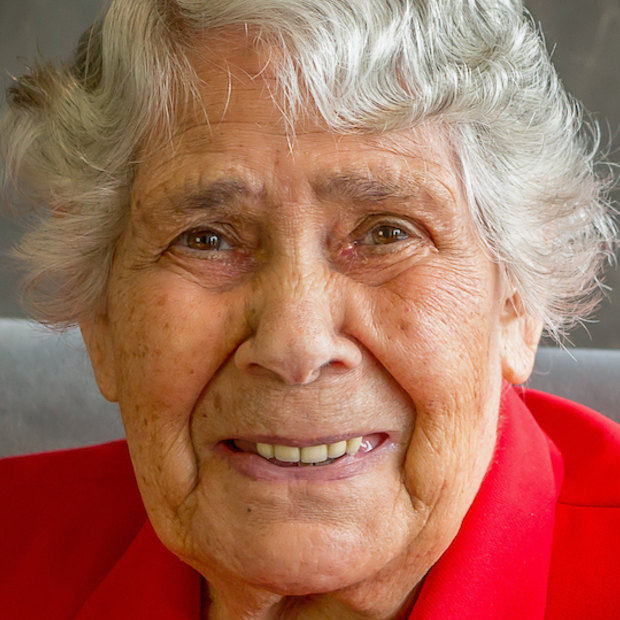
Dr Lowitja O’Donoghue AC CBE DSG.Credit: Leanne King
Dr Lowitja O’Donoghue AC CBE DSG, daughter of a liaison between a white stockman and an Aboriginal woman in the Australian outback, seemed at birth to have no prospects. She was one of thousands of children coming from such relationships, many destined to live out their lives on the fringes of Australian society. But O’Donoghue had the intelligence and vision to make the most of the few opportunities presented to her.
She grew up to become one of the most powerful advocates for her people, to hold senior bureaucratic positions, to become a professorial fellow, to address the United Nations and to be seriously considered for appointment as governor-general of Australia.
Her father, Tom O’Donoghue, of Irish descent, was to have six children during a long-term relationship with his Aboriginal partner, Lily (no known surname). O’Donoghue was removed from her parents by missionaries acting on behalf of the South Australian Aboriginal Protection Board, but it is understood to have been with the consent of her parents. O’Donoghue never again saw her father, who had one more child by Lily and then departed, and she did not see her mother again for more than 30 years. When they did reunite, O’Donoghue, who had used the name a missionary had chosen to baptise her with, was South Australian director of the Commonwealth Department of Aboriginal Affairs, and Lily was living in a tin shanty in Oodnadatta. The emotion was intense but they could only converse with the aid of an interpreter because O’Donoghue had been too young to learn the Pitjantjatjara language, and Lily, a member of the Yankunytjatjara tribe, had never learnt English.
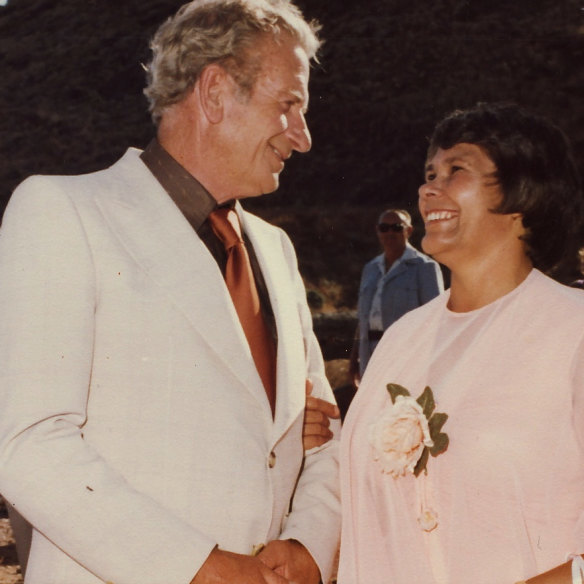
Dr Lowitja O’Donoghue on her wedding day to Gordon Smart in 1979.Credit: Lowitja O’Donoghue Collection
Lowitja O’Donoghue was born on about August 1, 1932 (she had no birth certificate and had to estimate the date) at Agnes Creek, on Granite Downs station, leased by Tom O’Donoghue and his brother, in an area which was known by the Aboriginal people as Indulkana, 320 kilometres north of Coober Pedy. She was the fifth child and like her four elder siblings initially went to the United Aborigines Mission’s receiving station for Aboriginal children at Oodnadatta. From there O’Donoghue and her sisters went to the mission’s Coledale Children’s Home at Quorn, in the Flinders Ranges.
The community at Quorn was tolerant and encouraged children from the home to participate in local events. In 1944 Colebrook Home was relocated to Eden Hills in the south of Adelaide.
O’Donoghue got her intermediate certificate at Unley General Technical High School in Adelaide and was taught up to leaving certificate level. At the age of 16, she became a nanny. At the age of 18, she got a job as a nursing aide at the local hospital. Three years later, encouraged by the matron, she applied to become a student nurse at Royal Adelaide Hospital, but was told she would not be accepted because she was Aboriginal. “I suppose that was when I first really got my blood up,” she said later. “It was completely unjust. I was deeply resentful and determined I wouldn’t accept the decision.”
O’Donoghue met a champion of Aboriginal causes, Dr Charles Duguid, and joined the Aborigines Advancement League, which campaigned to have Indigenous people admitted to become nursing trainees. In 1954, O’Donoghue and another Aboriginal girl were accepted as trainees at Royal Adelaide Hospital.
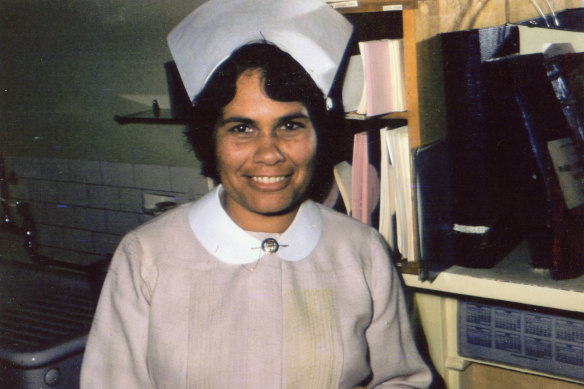
Lowitja O’Donoghue as a Charge sister at Royal Adelaide Hospital 1959.Credit: Lowitja O’Donoghue Collection
In 1961, having risen to become a charge nurse, O’Donoghue went to India with the Baptist Overseas Mission, working at Assam in northern India, where she saw the problems of a disadvantaged people in broader perspective.
On her return to Australia in 1962, O’Donoghue went into the bureaucracy, first working as an Aboriginal Liaison Officer with the SA Department of Education, then as a welfare officer with the SA Department of Aboriginal Affairs, based at Coober Pedy. There, an aunt and uncle recognised her and got word to her mother. O’Donoghue went to Oodnadatta for the reunion.
In 1967, she became a junior administrative officer with the Commonwealth Department of Aboriginal Affairs. In 1970, she began a two-year membership of Aboriginal Legal Rights Movement, and in 1975, she was appointed an SA regional director for the Department of Aboriginal Affairs. The departmental secretary, Barrie Dexter, said neither her Aboriginality nor her gender were factors in her appointment; she had got there on her merits. In 1976, O’Donoghue was the first Aboriginal woman to be inducted into the Order of Australia, and the following year became foundation chair of the National Aboriginal Conference and the Aboriginal Development Commission.
In 1979, O’Donoghue, who had decided to forgo marriage and children in favour of working full-time, married a medical orderly, Gordon Smart, and it became a happy marriage. O’Donoghue was appointed chair of the National Aboriginal Congress, though that body was then dissolved because of internal discord. In 1983, she was appointed a Commander of the British Empire (CBE), a year later she was named Australian of the Year, and in 1985 she became director of the SA Office of the Department of Aboriginal Affairs. Four years later O’Donoghue was appointed SA commissioner of the Aboriginal Development Commission.
In 1990 O’Donoghue was appointed inaugural chair of the Aboriginal and Torres Strait Island Commission (ATSIC), which advised the government on policy. She took up many issues, including the right of Aboriginal communities to have a say in government provision of health services.
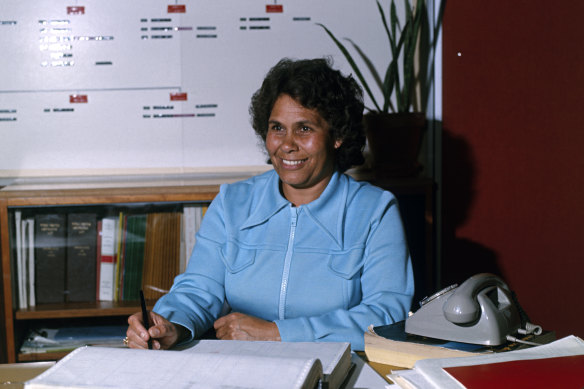
Lowitja O’Donoghue working at Department of Aboriginal Affairs during the 1970s. Credit: Lowitja O’Donoghue Collection
O’Donoghue played a key role in such issues as legislation on native title, and the formation of a Council for Aboriginal Reconciliation. She said: “We have come a long way, but there is no turning back. For Indigenous Australians, the acid test of reconciliation will be improved health, better housing, education and employment. Reconciliation is the way of the future, our shared future in which Australia is united as one people with many rich cultures and a commitment to justice and equity.”
O’Donoghue was one of a small group of Indigenous people to attend a federal cabinet meeting in 1991 to present ATSIC’s response to the report of the Royal Commission into Aboriginal Deaths in Custody. Widowed that year, she formally added the name Lowitja.
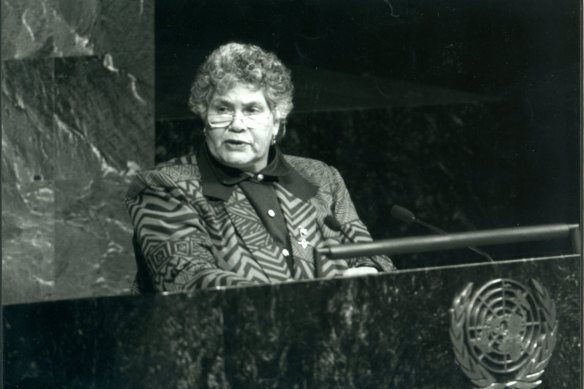
Lowitja O’Donoghue addressing United Nations general assembly, Geneva 1992.Credit: Lowitja O’Donoghue Collection
In 1992, O’Donoghue led the Australian delegation to an international group working on the proposed United Nations Declaration of Rights for Indigenous People. During the UN International Year of Indigenous People, she addressed the UN General Assembly. In the aftermath of the Mabo ruling by the Australian High Court, ending the notion of “terra nullius” as the basis for European colonisation, O’Donoghue proposed a national Aboriginal land acquisition fund, which attracted the attention of the federal government. O’Donoghue took a major role in negotiations with the government in the lead-up to the Native Title Act. In 1995 then-prime minister Paul Keating seriously considered appointing her governor-general of Australia.
Instead, in 1996 O’Donoghue became inaugural chair of the Cooperative Research Centre for Aboriginal and Tropical Health, which would undergo several reorganisations to become the Lowitja Institute for Aboriginal and Torres Strait Islander Health. O’Donoghue pushed for an official apology from the Australian government to the stolen generations.
In 1998, O’Donoghue was named a “national living treasure”. She was given an honorary fellowship of the Royal Australian College of Nursing and many other honours, including Companion of the Order of Australia (AC). She received honorary doctorates from several universities and became an honorary professorial fellowship from Flinders University, South Australia. In 2005 she was made a Dame of the Order of St Gregory the Great by Pope John Paul II.
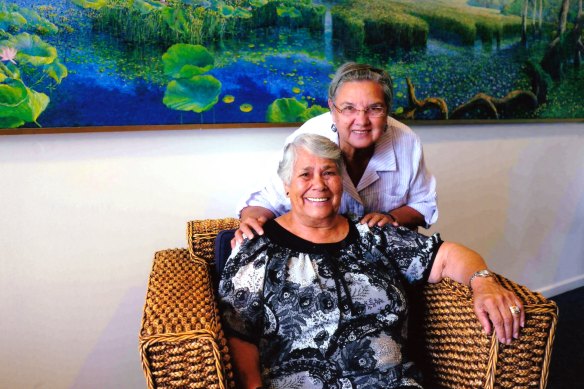
Dr Lowitja O’Donoghue AC CBE DSG and Pat Anderson AO Co-Patrons Lowitja Institute. Credit: Lowitja O’Donoghue Collection
Lowitja O’Donoghue died peacefully on Sunday on Kaurna land in Adelaide, with her family by her side.
Start the day with a summary of the day’s most important and interesting stories, analysis and insights. Sign up for our Morning Edition newsletter.